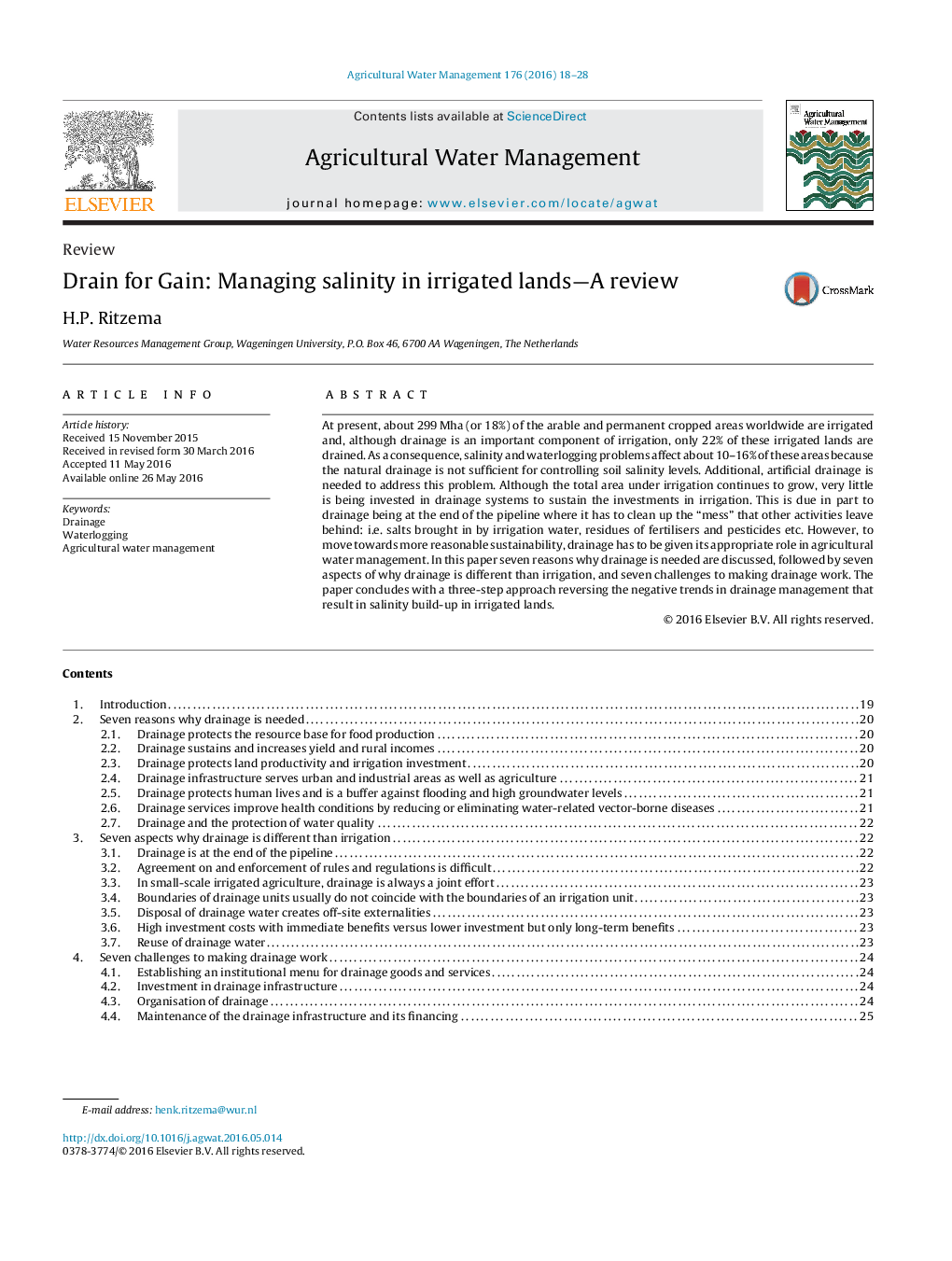| کد مقاله | کد نشریه | سال انتشار | مقاله انگلیسی | نسخه تمام متن |
|---|---|---|---|---|
| 4478231 | 1622904 | 2016 | 11 صفحه PDF | دانلود رایگان |
• The low priority of drainage in irrigated agriculture is explained.
• Seven reasons why irrigated agriculture needs drainage are discussed.
• Seven reasons why drainage is different than irrigation are discussed.
• Challenges making drainage work are outlined.
• An approach revising salinity build-up in irrigated lands is presented.
At present, about 299 Mha (or 18%) of the arable and permanent cropped areas worldwide are irrigated and, although drainage is an important component of irrigation, only 22% of these irrigated lands are drained. As a consequence, salinity and waterlogging problems affect about 10–16% of these areas because the natural drainage is not sufficient for controlling soil salinity levels. Additional, artificial drainage is needed to address this problem. Although the total area under irrigation continues to grow, very little is being invested in drainage systems to sustain the investments in irrigation. This is due in part to drainage being at the end of the pipeline where it has to clean up the “mess” that other activities leave behind: i.e. salts brought in by irrigation water, residues of fertilisers and pesticides etc. However, to move towards more reasonable sustainability, drainage has to be given its appropriate role in agricultural water management. In this paper seven reasons why drainage is needed are discussed, followed by seven aspects of why drainage is different than irrigation, and seven challenges to making drainage work. The paper concludes with a three-step approach reversing the negative trends in drainage management that result in salinity build-up in irrigated lands.
Journal: Agricultural Water Management - Volume 176, October 2016, Pages 18–28
